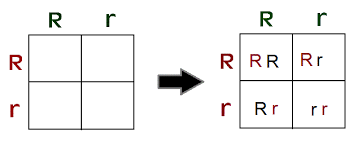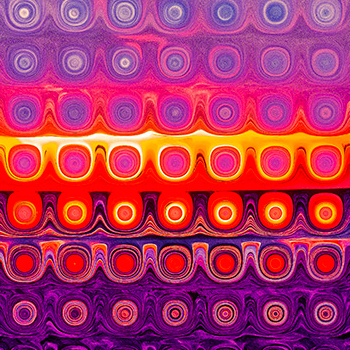Any way I can draw or use Punnett squares?
I find Punnett squares really helpful for expanding equations , but I'm not sure how to write them in an answer. Anyone have any idea?
I find Punnett squares really helpful for expanding equations , but I'm not sure how to write them in an answer. Anyone have any idea?
2 Answers
See explanation.
Explanation:
I am not sure whether or not you can draw Punnett Squares on Socratic but maybe you can ask @Parzival S. He's a genius at drawing tables and charts.
All the best!
See below for an idea
Explanation:
First off, a Punnett square is a format to show the combination of two quantities or entities that can be broken down into smaller bits. Genetics is one area where they show up and generally look like this:

The trick to building one of these things is to show the interaction between the two sides and have the squares show the interaction piece-by-piece.
I toyed with this a bit and can't figure out how to build the boxes and have things look neat. I think what we can do, however, is within a table format use colours and brackets to show what's going on.
For instance, let's say I want to show
The idea is to set up a table (I've used hashtag {: stuff :} hashtag to get rid of the outside brackets. I could have used hashtag ( stuff ) hashtag and that would help centre elements a bit).
Within that table, use the "overbrace" function to show what is happening within each cell - the "explanation" as to how a certain result is achieved.
I used colours to try to highlight that - blue for single x terms, red for constants.
And then to help keep the brackets the same height on each cell, I put all of them to a power - I used white text where a power was used only as a format trick.
The whole thing without the hashtags looks like this:
hashtag {:(color(white)(0),color(blue)x,color(red)1),
(color(blue)x,overbrace(color(blue)(x^2))^(color(blue)x xx color(blue)x),overbrace(color(purple)x^color(white)(0))^(color(blue)x xx color(red)1)),
(color(red)(-2),overbrace(color(purple)(-2x^color(white)(2)))^(color(red)(-2) xx color(blue)x),overbrace(color(red)(-2)^color(white)(0))^(color(red)(-2) xx color(red)1)):} hashtag
I'm not sure if this is helps but it's an idea to work with!


